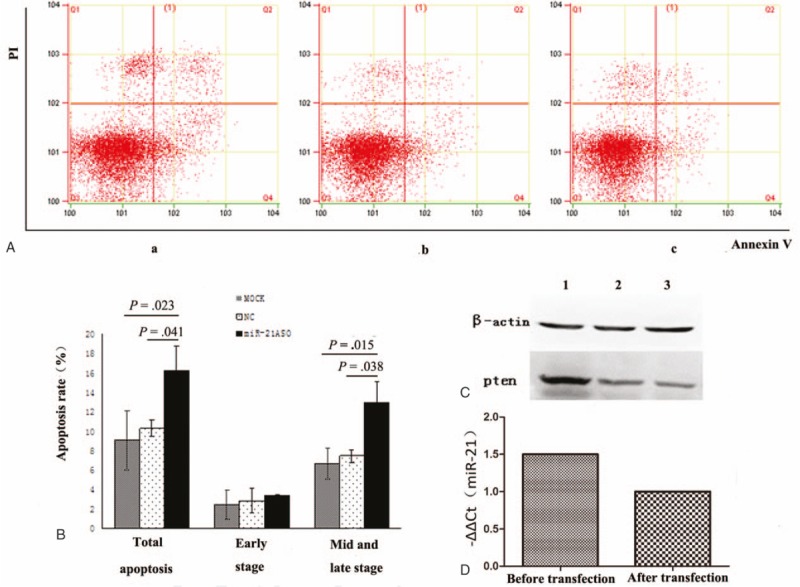Figure 3.

The function of miR-21 in DLBCL. miR-21 induced apoptosis of tumor cells in DLBCL. ASO-21 and SCO-21-treated cells were exposed to 100 μmol/L etoposide for 4 hours. (A) Flow cytometric analysis of ASO-21-treated and SCO-21-treated DLBCL cells. Apoptotic cells are in Q2 and Q4. Apoptotic rate (Q2 + Q4) of ASO-21-treated cells (a) showed significantly higher percentage than those of SCO-21-treated cells (b) and normal cells (c). (B) Percentages of apoptotic cells (Q2 + Q4). Symbols and bars indicate means and SDs of triplicate samples. Total apoptosis rate of miR-21ASO group significantly increased compared with NC group (P = .041) and MOCK group (P = .023); and mid and late stage of apoptosis of miR-21 ASO group significantly increased compared with NC group (P = .038) and MOCK group (P = .015). (C) PTEN protein was detected using Western blot 48 hours after transfection. 1 = ASO-21 group, 2 = normal control group, 3 = MOCK group. ASO-21 = antisense oligonucleotide targeting miR-21, DLBCL = diffuse large B-cell lymphoma, MOCK = blank control, NC = non-specific control, transfected with SCO-21, PTEN = phosphatase and tensin homolog, SCO = scrambled control oligonucleotide.
